Discover 10 hidden attractions, cool sights, and unusual things to do in Urbino (Italy). Don't miss out on these must-see attractions: Palazzo Ducale, Urbino Cathedral, and Oratorio di San Giovanni Battista. Also, be sure to include National Gallery of the Marche in your itinerary.
Below, you can find the list of the most amazing places you should visit in Urbino (Marches).
Table of Contents
Palazzo Ducale
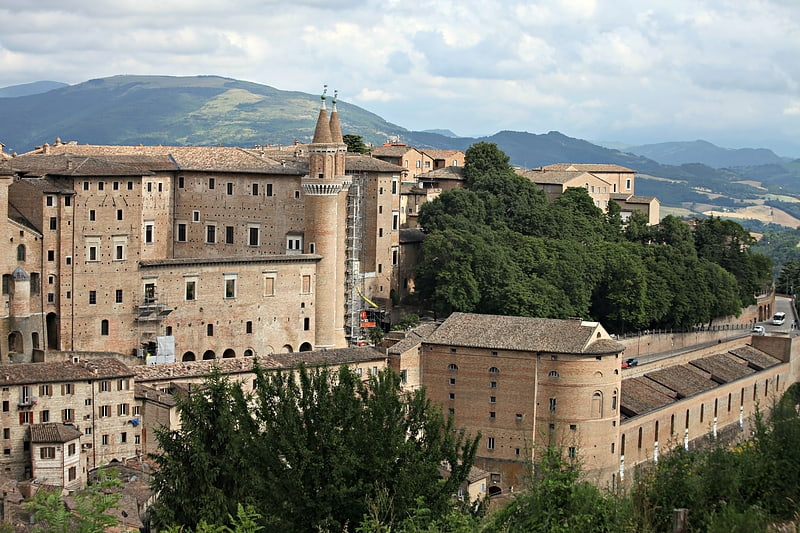
Building in Urbino, Italy. The Ducal Palace is a Renaissance building in the Italian city of Urbino in the Marche. One of the most important monuments in Italy, it is listed as UNESCO World Heritage Site since 1998.[1]
Address: Piazza Duca Federico, 107, 61029 Urbino
Urbino Cathedral
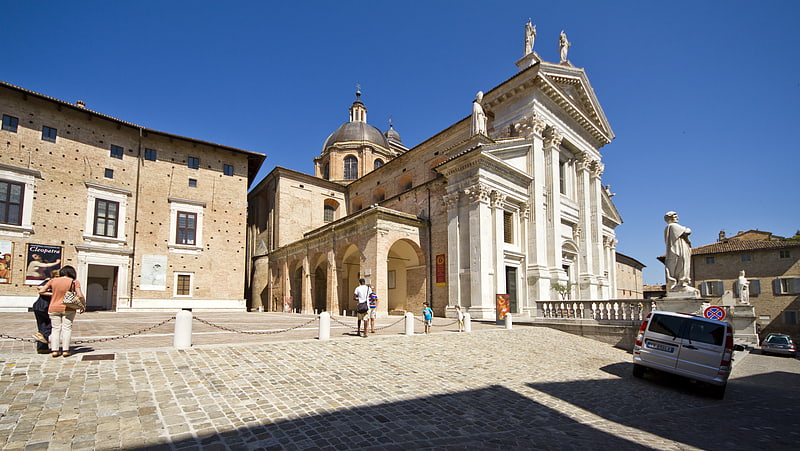
Also known as: Duomo di Urbino
Cathedral in Urbino, Italy. Urbino Cathedral is a Catholic cathedral in the city of Urbino, Italy, dedicated to the Assumption of the Blessed Virgin Mary. Since 1986 it has been the seat of the Archbishop of Urbino-Urbania-Sant'Angelo in Vado, and was previously the seat of the Archbishops of Urbino.[2]
Oratorio di San Giovanni Battista
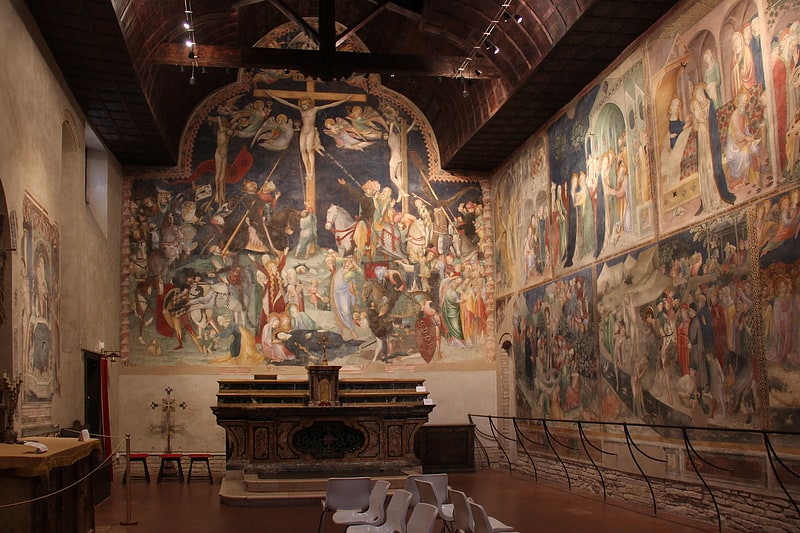
Chapel in Urbino, Italy. The Oratory of St John the Baptist is a 14th-century small chapel or prayer hall located in Via Francesco Barocci, in Urbino, Region of the Marche, Italy.
The oratory is best known for its late Gothic style fresco cycle (1416) by the brothers Lorenzo and Jacopo Salimbeni. The subjects include a Madonna dell’Umiltà and a Crucifixion, In addition the oratory has scenes from the life of John the Baptist such as: the Annunciation of Birth; his Baptism of Jesus, Career in Baptizing, and Sermons of St John.[3]
Address: Via Federico Barocci, 31, 61029 Urbino
National Gallery of the Marche
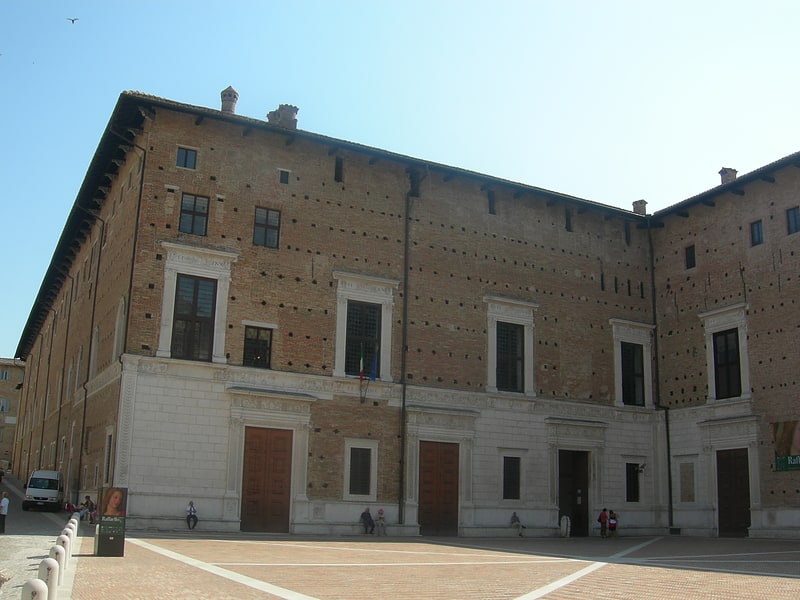
Art gallery, Museum, Architecture, Art museum, Shopping
Address: Piazza Rinascimento 13, 61029 Urbino
City Museum
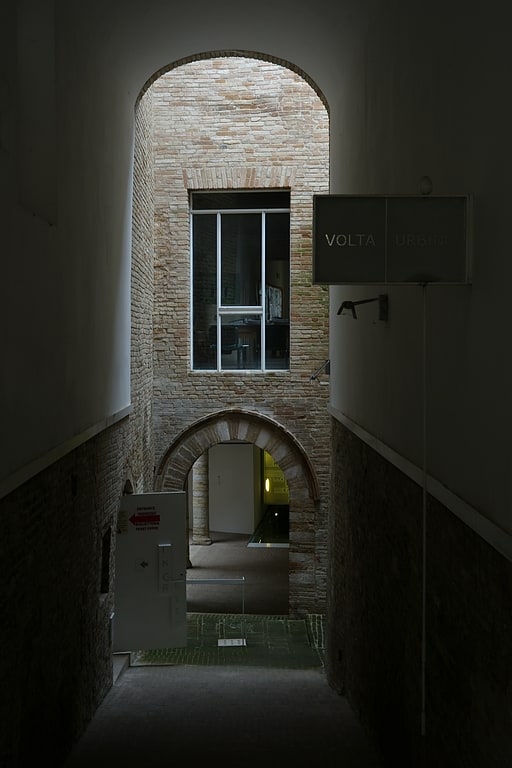
The Museum of the City of Urbino was a museum aimed at presenting the history and characteristics of the city through a modern and engaging layout. It opened on June 8, 2007 in the basement of the Odasi Palace, with its main entrance on Via Lorenzo Valerio. Since 2015 it has been replaced by the House of Poetry, which officially opened on March 27.
Teatro Sanzio
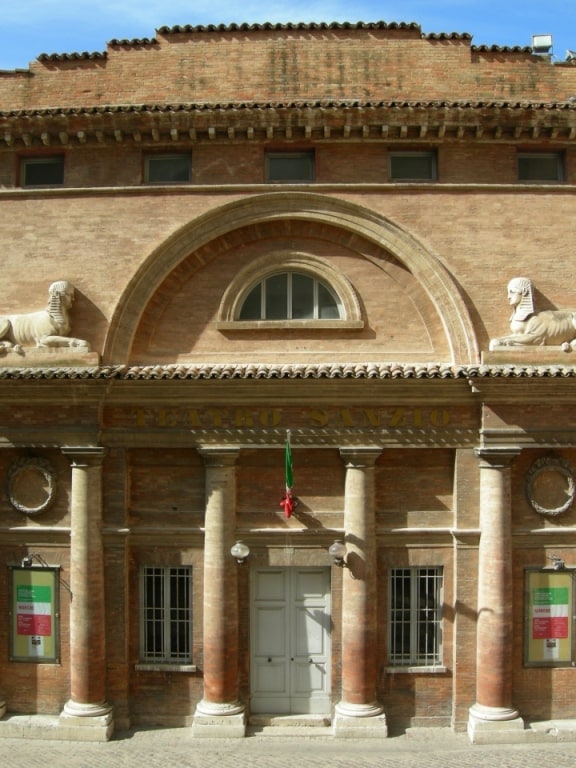
The Raffaello Sanzio theater is the main Urbino theater.
Address: via Garibaldi, 61029 Urbino
Porta Valbona

Porta Valbona is the main urban door of the city walls of Urbino, in the Marche.
Address: Via Giuseppe Mazzini, 61029 Urbino
Orto Botanico "Pierina Scaramella"
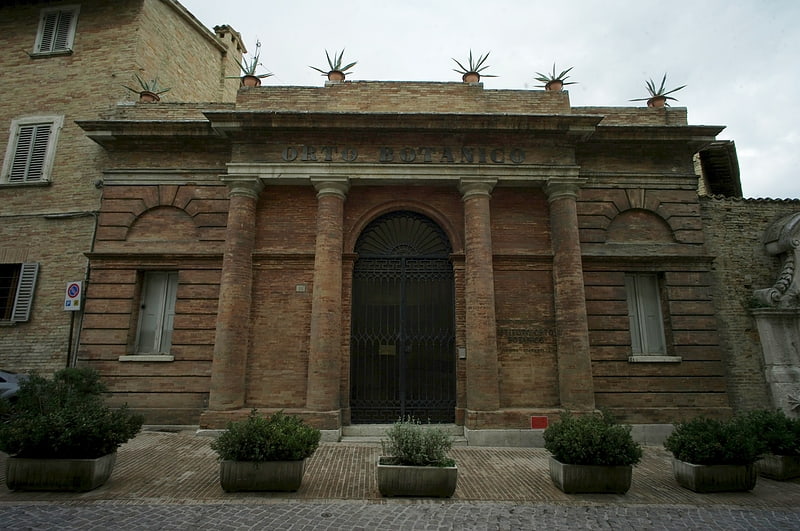
The Orto Botanico "Pierina Scaramella", also known as the Orto Botanico dell'Università di Urbino, is a botanical garden maintained by the University of Urbino, and located at via Bramante, 28, Urbino, Marche, Italy. the entrance fee is 1 euro.
The garden was established in 1806 by Giovanni De Brignole. It was organized into: First terracing The botanical garden covers 2200 square meters and is divided into three inclined terraces along the side of the hill where the city of Urbino stands. First terrace: Hortus simplicium This area, completely renovated and modified in the early 1900s, is large and embellished, in the center, by a small tank with some aquatic species including: Nymphaea alba L. Menta aquatica L. Myriophyllum verticillatum L. Eichhornia crassipes Solms. From this point you can admire the long and imposing three-ramp staircase leading to the main entrance of the garden and the greenhouse built in 1813 by De Brignoli and inside which all the plants that can not stand the winter cold and which only in summer they are located along the paths and flowerbeds in the garden. All the space is used for the cultivation and study of medicinal plants (the simple ones) arranged in thirteen flower beds, with boxwood border, and grouped according to the properties and therefore the use that derives from them (plants active on the skin, digestive system, on the cardio-circulatory, nervous, genitourinary, respiratory system, plants with purgative, antiparasitic and insecticidal action. A poster design helps the visitor to find out about the historical and scientific origins of the simple gardens and their importance, on the use of plants. present in every single flower bed in the medicinal application area. During the visit of this shelf, the visitor will also be able to admire some very fascinating arboreal specimens located on the perimeter edges of the garden: Ginkgo biloba L. Picea excelsa Link. and Cedrus deodara G. Don fil. Arboretum.
Second terrace From the simple garden, some steps, flanked by two small basins, lead to the second shelf. On the right side there is an old wrought iron pump, the work of the craftsman Quinto Galvani (1849). The whole area has been divided since its origins into long and narrow rectangular flowerbeds that delimit many small paths. The arrangement of herbaceous and shrubby species, made according to the Linnean system, was then modified according to the needs of cultivation and local climatic conditions. Along the paths you can also admire some tall trees: Tilia heterophylla Vent. Gleditschia triacanthos L. Calliandra houstoni Benth. The last adjacent flower beds at the convent of S. Francesco, shady and damp, they host the ferns.
Third terrace Another four steps lead to the last shelf of the garden, this system structured like the second. Here we find species belonging to various families and a Taxus baccata L. and an imposing Fagus sylvatica L. which date back to the time of the foundation of the garden. This last shelf ends with the surrounding wall in which, in the summer, a part of the collection of is placed fat plants. Arboretum To the right and behind the De Brignoli greenhouse, we find an area where you can admire several tall trees. Among these: the holm oak (Quercus ilex L.), The maple (Acer pseudo-platanus L.), The ailanthus (Ailanthus glandulosa Desf.), The cypress (Cupressus sempervirens L.) and the ash (Fraxinus excelsior L. Small irregular flowerbeds welcome some undergrowth species. A large greenhouse was built in 1811, and in 1812 the garden's first catalog listed 2731 species.
Today the garden contains medicinal and ornamental plants such as Ailanthus glandulosus, Sophora japonica, and Cycadaceae and Gymnospermae. Trees include Acer pseudo−platanus, Fagus silvatica, Fraxinus excelsior, Liriodendron tulipifera, Quercus ilex, and Taxus baccata.[4]
University of Urbino

Also known as: Università degli Studi di Urbino "Carlo Bo"
Public university in Urbino, Italy. The University of Urbino "Carlo Bo" is an Italian university located in Urbino, a walled hill-town in the region of Marche, located in the north-eastern part of central Italy.
During the 1960s/70s, the University succeeded in buying up numerous derelict buildings in the old town centre, which have since been restored and used as faculty and department buildings. While the student body and faculties gradually increased and developed over time, it was under the long-lasting rectorship of Senator for Life Carlo Bo that the University enjoyed unprecedented growth in size and prestige, prompting the former president of the European Commission, Roy Jenkins, to state that "the University of Urbino is an incisive presence in contemporary thought, contributing in original ways to the cultural and intellectual life of Europe". This was also the period in which architect Giancarlo De Carlo designed and built the University Halls of Residence and redesigned and modernised several of the university's other buildings.
Since 2012 the University of Urbino has been a state-run University. It currently has six departments and two institutes, about 14,000 students, many of whom are from overseas, about 800 teachers and 400 administrative staff members. The university has no central campus as such, and instead occupies numerous buildings throughout the town and in the surrounding countryside. The main accommodation blocks are situated a short distance from the town.
Traditionally a centre of studies in law since its foundation in 1506, nowadays the University of Urbino is renowned mostly for teaching and research in humanities, in particular literature and language studies, and sociology, and for the good reputation of its Italian language courses.[5]
Address: Via Aurelio Saffi, 2, Urbino
PalaMondolce

The "Alberto Carneroli" Sports Hall or PalaCarneroli is an indoor arena in Urbino, which used to host the home matches of Robur Tiboni Volleyball. On September 26, 2020, it was named after Alberto Carneroli. Beginning with the 2021-22 Serie A1 season, the facility will host Megavolley Vallefoglia's home league and cup matches.